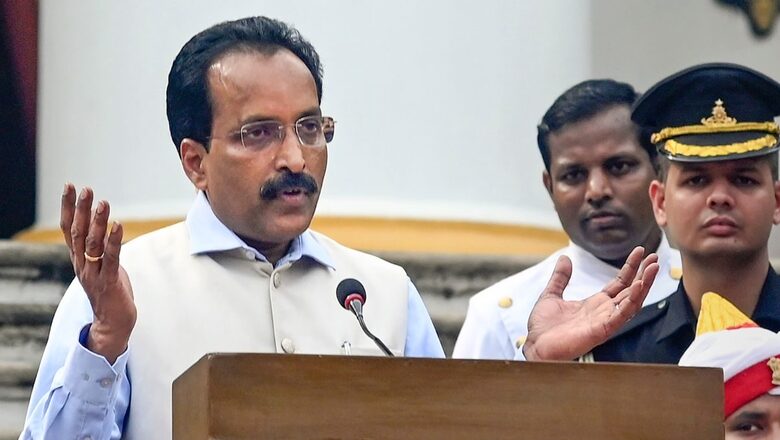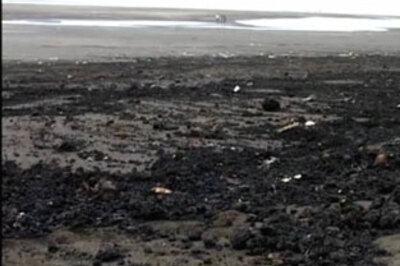
views
The ISRO is now looking forward to the maintenance and orbit orientation of Aditya L1, said chief S Somanath after the solar mission spacecraft successfully reached its final destination — Lagrange Point 1.
“We were confident, everything went according to plan. We were sitting and enjoying. Now, we will look forward towards maintenance and orbit orientation. There are other satellites at L1 but ours is unique and more sophisticated,” Somanath told CNN-News18 in an exclusive conversation.
The ISRO chief said after the success of the solar mission, all focus will now be on Gaganyaan — India’s human spaceflight programme. “…In our spare time, we will work on NISAR (NASA-ISRO Synthetic Aperture Radar mission) and other projects,” he said.
He added: “What we have achieved today is the exact placement based on our measurement and very correct prediction of the velocity requirement. Right now, in our calculation, it is at the right place but we are going to monitor for the next few hours to see whether it is at the right place,” he added.
Aditya L1 is India’s first space-based solar observatory to study the Sun, which helps sustain life on Earth. Its destination, the L1 point, is about 1.5 million km from Earth from where it will orbit the Sun and study its wonders, uninterrupted by eclipses and occultations. This will provide a greater advantage in observing solar activities and their effect on space weather in real time, ISRO officials said.
According to ISRO, the Halo-orbit insertion (HOI) of Aditya L1 was accomplished at 4 pm approximately. The final phase of the manoeuvre involved firing of control engines for a short duration, it said in a statement.
Prime Minister Narendra Modi also announced ISRO’s latest feat, which comes months after the success of Chandrayaan-3 where the challenging soft landing of the spacecraft was achieved on an unexplored part of the lunar surface.
‘Event about only placing Aditya L1 in precise Halo orbit’
Somanath further said Saturday’s event was about only placing the Aditya L1 in the precise Halo orbit. “It was moving towards the Halo orbit but we had to do a little bit of corrections to put it in the right place. So something like a 31 metres per second velocity had to be given cumulatively to the satellite to keep it at the right orientation,” he told reporters.
The senior scientist said the Halo orbit is that which moves around the L1 point with a size of six lakh km in one dimension, over two lakh km in another dimension and one lakh km in one more dimension, forming an egg-shaped orbit.
“So in this new orbit, it had to be placed very precisely. If you don’t do the correction today then it can escape from this point (L1). We will not allow it to escape. There are some contingencies but I am telling you mathematically it can escape. So it has been done very precisely,” he said.
He added: “This specific Halo orbit is selected to ensure a mission lifetime of 5 years, minimising station-keeping manoeuvres and, thus, fuel consumption and ensuring a continuous, unobstructed view of the sun.”
Here are the major science objectives of the Aditya L1 mission:
- Study of the solar upper atmospheric (chromosphere and corona) dynamics.
- Study of chromospheric and coronal heating, physics of the partially ionised plasma, initiation of the coronal mass ejections (CME), and flares.
- Observe the in-situ particle and plasma environment, providing data for the study of particle dynamics from the Sun.
- Physics of the solar corona and its heating mechanism.
- Diagnostics of the coronal and coronal loops plasma: Temperature, velocity and density.
- Development, dynamics and origin of CMEs.
- Identify the sequence of processes that occur at multiple layers (chromosphere, base and extended corona), which eventually leads to solar eruptive events.
- Magnetic field topology and magnetic field measurements in the solar corona.
- Drivers for space weather (origin, composition and dynamics of solar wind).
(With PTI inputs)



















Comments
0 comment